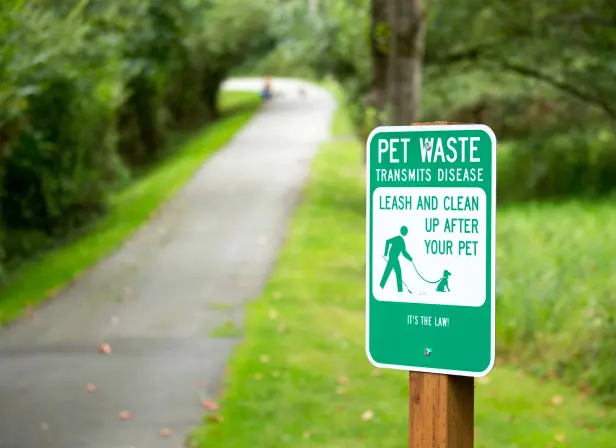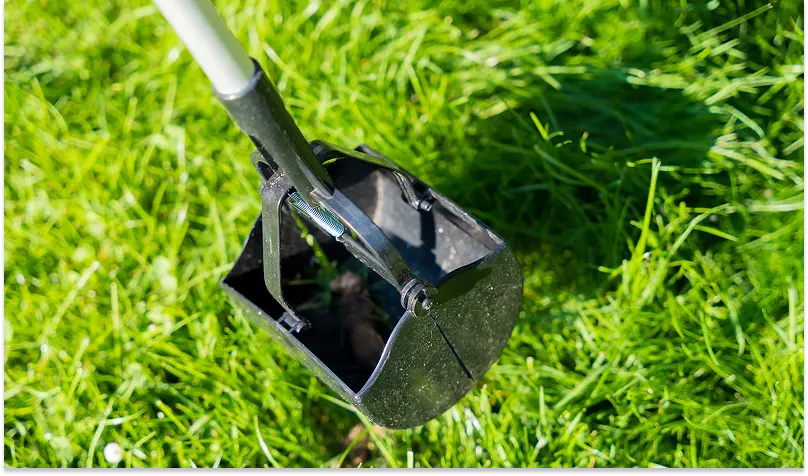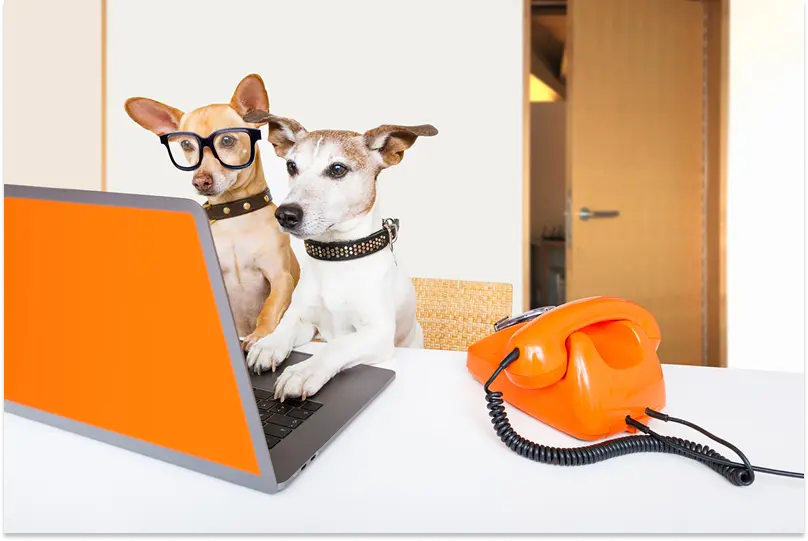How to Start a Pooper Scooper Business: From Idea to Profit

Want to start a pooper scooper business? Our detailed guide covers every step, from planning to optimizing your service routes, and marketing your business.

- Plan your business properly. Get your business license, insurance, and legal setup right from the start to avoid problems later.
- Research your local market first. Check if there's demand in your area and see what competitors are charging before you invest.
- Buy good equipment that lasts. Quality tools make you work faster and look more professional to customers.
- Smart routing makes more money. Plan efficient routes to clean 3-4 yards per hour instead of just 1-2 with poor planning.
- Great service creates repeat customers. Show up on time, do thorough work, and stay clean — happy customers refer their friends.
- Use technology to grow faster. Route planning apps like Routific and customer management software help you serve more clients without getting overwhelmed.
- Offer different services to earn more. Weekly cleanups bring steady income, while extras like yard deodorizing boost your profits per customer.
There are few guarantees in life, but if you’re a dog owner, you know that poop is one of them. Cleaning up after your four-legged friend has always been par for the course in dog ownership, but today, you can hire someone to do this dirty job for you.
And people are taking advantage of these services in droves.
In fact, the pet waste removal services industry is expected to reach $101.2 million by 2031. With nearly 70% of homes in the U.S. owning a pet, there is plenty of demand for a pooper scooper business in most locations.
The question is: If you want to start a business taking care of other people’s dog poop, where do you start?
In this guide, we’ll walk you through every step of launching a pet waste removal business, from initial planning to route optimization, marketing, and scaling.
But before we dive into the logistics, it’s crucial to ask yourself this important question:
Is a pooper scooper business right for you?
For a business to succeed, it needs commitment from the owner and demand from the local market. Sure, other factors come into play, but if you don’t have these two fundamental things in place, you’ll struggle to grow your poop scooping business.
So, before you move forward, take the time to do the following:
Know the local market and demand
Is there demand for pet waste removal services in your area? Get a feel for the local market. Scope out the competition.
You may be surprised to find that many pet owners are willing to pay for professional clean-up services, whether it’s because they have busy schedules, physical limitations, or simply just want the convenience of it all.
To see if there’s demand in your area, conduct local market research.
- Observe local neighborhoods
- Visit pet stores
- Talk to local veterinarians
Is there an unmet need for pet waste disposal? How much competition is there? What are they charging?
Taking the time to do this primary research will give you valuable insights into your local market that you can use to build a solid business plan.
Gauge your commitment
Let’s be honest: the poop scooping business is hard work. The business model is straightforward. But are you prepared to put in the physical work? Are you okay with handling pet waste? Will you be okay with working outside all day, especially in the summer heat?
These may seem like basic and obvious questions, but it’s crucial to answer them honestly.
You’ll also need to consider two other important things:
- Customer service: You will be running a service business, so customer satisfaction will be a top priority. Are you prepared to build a rapport with dog owners, address concerns that may arise, and communicate professionally?
- Problem-solving: You may find yourself in unexpected situations. Clients may make difficult requests, or yard conditions may be worse than you anticipated. Can you think on your feet and find practical solutions to problems if they arise?
Know your startup costs
Pooper scooper services generally have low startup costs that can range from $300-$5,000+.
Your costs will depend on several factors:
- Will this be a solo operation at first, or will you hire help right away? Hiring will raise your startup costs significantly.
- How much equipment will you start with? Many business owners start with a scooper, trash bags, a good pair of boots, and their own vehicles. But if you’re hiring from the start or want a more sophisticated setup, equipment costs can add hundreds or thousands of dollars to your initial costs.
- What is your initial marketing plan? More complex marketing strategies require bigger investments, especially if you plan to focus on digital marketing right away.
Of course, you’ll also need to factor in the cost of forming your business, obtaining licenses/permits, and insurance fees.
Understand waste disposal regulations and methods
Waste disposal is where many new business owners get surprised. There are more rules and considerations than you might expect. In some places pet waste from commercial operations is classified as solid waste that must be sent to licensed landfills, not just tossed in any dumpster.
You have two main disposal options, each with different requirements and costs:
- The customer trash method is the most common approach. You double-bag the waste and place it in the customer's regular garbage for municipal pickup. This works well for residential clients, but always confirm they're comfortable with this arrangement upfront. Some customers prefer you handle disposal yourself.
- The commercial disposal method involves collecting all waste and taking it to a licensed facility yourself. For this approach, you'll need to:
- Research licensed disposal facilities in your service area
- Budget for disposal fees (typically charged by weight or volume)
- Factor in transportation time to these facilities
- Keep disposal receipts for record-keeping
Important regulatory considerations vary by location. For example, Seattle requires pet waste removal within 24 hours to prevent stormwater contamination, while Englewood, NJ can fine up to $250 for waste violations. Check your local and state regulations before starting operations.
One successful operator's approach: Erica from Kroopin's Poopin Scoopin consulted local waste collection facilities about getting a specialized waste disposal permit approved, allowing her to dispose of dog waste at a local dump. This streamlined her operations and provided a professional solution for larger volumes.
Environmental considerations matter too. Pet waste is a dangerous pollutant, in the same category as toxic chemicals, so proper handling protects both public health and waterways. Never allow waste to enter storm drains or waterways — contaminated stormwater flows directly into streams and rivers untreated.
Route planning tip: Factor disposal stops into your daily routes. If you're using commercial disposal, cluster your service areas to minimize trips to disposal facilities. This keeps your operations efficient while staying compliant with local regulations.
If you’ve made it this far and still believe that a dog waste removal business is right for you, then it’s time to take action — starting with your business plan.
Phase 1: Lay the foundation (planning and legal)
Every successful business is built on a solid foundation of careful business and legal planning. These are some of the most important steps you can take when launching your business, as they’ll help you avoid legal or financial complications later on down the road.
Here’s where to start.
Step 1: Create your business plan and structure
A business plan will serve as your roadmap to success. It should cover every aspect of your operation, including:
- An outline of your business, its mission, and its goals.
- A detailed list of your services (one-time cleanups, weekly services, deodorizing, etc.), target market (commercial properties, homeowners, apartment buildings, etc.), and your unique selling point.
- A market analysis of highlighting local demand, competition, and your target demographics.
- Your business structure and how operations will be managed.
- Your marketing strategies to attract and retain clients.
- Financial projections, including your estimated startup costs, operating expenses, pricing, and projected revenue for the first 1-3 years.
Need help creating your plan? Adapt our template to match your business needs.
Choosing your business structure
You have a few options when selecting your business structure:
- Sole proprietorship: While simple to set up, a sole proprietorship will leave you personally liable for all business debts. If you plan to use a name other than your legal name, you’ll need a doing business as (DBA) to legally operate under that name.
- Limited Liability Company (LLC): An LLC provides protection against personal liability by separating your personal assets from business debts.
- Partnership: If you have a co-founder, a partnership structure will define responsibilities and profit-sharing.
Some business owners start out as sole proprietors with a DBA and eventually form an LLC once they start growing.
Step 2: Register your business, get licenses, and set up your banking
Even if you plan to operate as a sole proprietor, you’ll still need to take steps to make sure you’re legally compliant with local, state, and federal regulations.
Make sure that you:
- Register your business name. Make sure it’s unique and memorable. If you’re forming an LLC, you’ll register your business with your state. For sole proprietorships/DBAs, you’ll register with your local county.
- Obtain an employer identification number (EIN). If your goal is to hire employees (either now or in the future), you’ll need an EIN from the IRS. Sole proprietors can also get an EIN to open a bank account and keep their business finances separate from their personal ones.
- Obtain a business license and permit (if needed). Many jurisdictions will require you to at least have a general business license, but you may also need a waste disposal permit or a health permit. Research local regulations to make sure that you’re in compliance.
- Open a business bank account. Having a separate bank account for your business will make tax preparation and cash flow management easier.
- Figure out how you’ll handle payments. Set up payment processing methods now, so clients can easily pay you when you officially launch. Look at mobile payment apps, invoicing software, and traditional credit card processing options.
Step 3: Obtain business insurance
At the start, business insurance may seem like an unnecessary expense, but even in the pooper scooper business, there are liability concerns.
Insurance will protect against unforeseen circumstances.
Your individual needs may vary, but generally, entrepreneurs like you will likely need:
- General liability insurance. This coverage protects against property damage and bodily injury claims. For example, if a client trips over your equipment and is injured, or you fall and damage the client’s property, liability insurance will provide financial protection.
- Commercial auto insurance. Your personal auto policy won’t cover you if you’re doing business when an accident occurs (e.g., heading to a customer’s home or traveling to the dumps to dispose of pet waste). You’ll need a separate commercial auto policy for this purpose.
- Workers’ compensation insurance. If you plan to hire employees, you’ll need workers’ comp coverage. It’s required in all states except Texas.
- Inland marine insurance. This coverage is optional but beneficial. It’s not about boats, either! Inland marine insurance will protect your tools and equipment while in transit or at a job site.
Look for insurers that specialize in small business policies. Compare plans and prices to find coverage that meets your needs and budget.
Phase 2: Focus on equipment, pricing, and your service area

Now that you have your legal and planning foundations in place, you can focus on the fine details of your operation: your equipment, your pricing strategy, and your service area.
Step 1: Equip your business for success
Even with a low cost business like this, you’ll still need some basic equipment to get the job done right, including:
- A dog poop scoop (or two). Look for options that are durable, easy to clean, and work well on multiple types of terrain (grass, gravel, etc.). If you’re hiring from the state, make sure that each employee has their own scoop. You can likely find some great options on Amazon or at local pet stores.
- Trash bags. Invest in heavy-duty bags for dog waste disposal. Consider scented options to keep smells contained.
- Buckets or waste bins. You’ll need sealable, durable containers to collect and transport waste without spillage or odors.
- Work boots. Look for shoes that are comfortable, waterproof, and easy to clean.
- Sanitizer/disinfectant. Sanitation is crucial in this business. You’ll need to clean your equipment and boots in between jobs to prevent cross-contamination.
- Gloves. Disposable and durable gloves will be essential. Have a few boxes on hand at all times.
- Vehicle. If you don’t already have one, you’ll need to invest in a clean and reliable vehicle to transport your equipment. If it fits your budget, consider branding your vehicle to advertise your business as you work.
- Uniform. A branded shirt or professional workwear will create a professional image and give your business credibility.
- Route planning and optimization software. In the pooper scooper business, efficiency is everything. To maximize the number of yards you do per hour, you need to make sure that you’re using the most efficient routes to reach customers. Route optimization software like Routific will automate this process, saving you time and maximizing your efficiency.
Pro tip: Start with high-quality, basic equipment and upgrade over time as needed. Focus on durability at the start to ensure your equipment lasts as long as possible.
Step 2: Create your pricing strategy
To succeed with your dog poop removal business, you need to price your services competitively. At the same time, you need to make sure that you’re covering your operational costs and still generating a profit.
Finding that sweet spot can sometimes be tricky.
“When I was first starting out, I charged $15/weekly scoop (one dog),” said Phil from CleanYards.co in a post on Budgets are Sexy. “I now charge $20 for the same service and customers happily pay it. A ½ acre yard takes approximately 15 minutes from start to finish with quality scooping.”
The $15-$20/week range is common with many poop scoop businesses.
But your market may be different.
To find that sweet spot, you can perform:
- A cost analysis. Figure out your operational costs, including fuel, supplies, insurance, vehicle maintenance, and your desired hourly wage.
- Market research. How much are your competitors charging? Are you planning on offering premium or budget service?
Knowing your operational costs and the local market will help you price your services and ensure your profit margins align with your goals.
Many providers offer different tiers of options based on the frequency of the service, the size of the yard, and the number of dogs.
Subscription options are popular and a great way to generate reliable revenue and steady cash flow. Weekly and bi-weekly options are the most common.
Additionally, you can offer:
- One-time clean-ups at higher rates.
- Add-on services, like yard deodorizing or waste station refills, for an extra fee.
Example pricing structure
- Small Yard (1 dog, weekly): $15-20/visit
- Medium Yard (2 dogs, weekly): $25-30/visit
- Large Yard (2+ dogs, weekly): $30-35+/visit
- One-time cleanup: Higher flat fee, e.g., $50-$100+, depending on severity.
Take the time to create a clear price list that clients can easily understand, and be transparent about what’s included with your service.
With the right pricing strategy, you can take your side hustle to a full-time business. So, don’t be afraid to adjust your pricing as needed until you find the rate that local customers are happy to pay.
Step 3: Define your service area and optimize routes
The more efficient your business, the more profitable it will be. That’s why it’s so important to define your service area carefully.
At the start, and especially if you’re running solo, it may be best to focus on a smaller area with high demand to get jobs done as quickly as possible.
Along with travel time and efficiency, your service area can also impact your marketing effectiveness.
When defining your service area:
- Identify specific neighborhoods, towns, or zip codes to serve.
- Concentrate on areas with a high percentage of pet owners or demand for your services.
- Consider traffic patterns and road conditions to gauge how quickly and efficiently you’ll be able to move from one job to the next.
You have two main options here. You can either serve a specific, dense area to minimize travel time, or you can serve a larger area to capture more clients, but at the cost of longer travel time. Your personal preferences will guide this choice.
Once you’ve defined your service area, invest in route optimization software to ensure your routes are as efficient as possible.
Yes, you can plan your routes manually, but as your business grows, this will become increasingly more time-consuming.
Software like Routific can find the most efficient routes automatically using intelligent route optimization technology based on:
- Traffic patterns
- Business priorities
This will allow you to serve 3-4+ yards per hour versus 1-2 with inefficient route planning.
Phase 3: Launch and market your business
You’ve defined your operations and pricing. Now, it’s time to launch and promote your business to start growing your customer base. Effective marketing will be key.
Step 1: Establish an online presence
An estimated 76% of consumers research a business online before visiting or using it. Having an online presence is non-negotiable if you want to be visible to clients and credible.
Here’s how to get started.
- Build a basic website. You don’t need anything fancy. Just make sure your site is mobile-friendly and covers the basics, like your: services and pricing, service area, contact information, and testimonials (when available). Don’t forget to include an About Us page to share your story and start building trust with potential clients. If you have the budget, consider integrating a simple booking/quoting system like Jobber into your website to make it easy for clients to book services directly.
- Create a Google My Business profile. Claim and optimize your profile with your business location, phone number, photos, and description of your services. Creating and optimizing your profile will help your business appear on Google Maps and local search results.
- Get active on social media. Create accounts on the platforms that are most popular with your target audience. Join relevant local Facebook Groups and engage with people on social media to start building credibility and authority.
- Leverage online advertising. Consider purchasing ads on social media or search engines to expand your reach and attract more clients from digital channels.
You don’t necessarily need to hire a web designer to build your site. There are many user-friendly website builders you can use to create a professional site that will meet your needs.
Step 2: Use local marketing strategies
Offline marketing can be just as effective as digital channels for this type of business.
You can reach your audience directly, right where they live and spend their time through:
- Physical marketing materials, like flyers, door hangers, and yard signs that clients can display on their properties.
- Partnerships with local pet-related businesses. Connect with veterinarians, pet groomers, boarding facilities, dog parks, pet supply stores, and dog walking services. Leave business cards or flyers, and consider offering reciprocal referrals for some service providers.
- A dedicated referral program. Give clients an incentive to refer new ones by offering free services or discounts.
- Community areas. Post flyers or notices at local business community centers, HOAs, laundromats, coffee shops, and other areas where pet owners spend their time.
Consistency is key. Remember that marketing is an ongoing process, so be prepared to change or adjust your strategies regularly.
“Don’t put all your eggs in one basket when it comes to marketing,” says Tony of PoopScoopsforNoobs. “With the cost of paid advertising on the rise, I’m shifting my focus to building a strong referral program with satisfied customers and networking with other businesses in the dog industry to promote my poop scooping services. Paid ads will still play a role in my marketing plan, but I’m excited to explore new ways to bring awareness to my business.”
Step 3: Develop a client onboarding process
Many new business owners overlook the onboarding process, but it’s a crucial step in setting a positive tone for the client experience and building a solid working relationship.
Your onboarding process should cover:
- How you handle initial inquiries. The goal is to respond promptly and professionally to all client inquiries. Have a process in place to make sure you can tackle this task as quickly and efficiently as possible.
- Property assessment. Develop a standardized process for assessing yards (size, condition, etc.) to provide an accurate quote.
- Your service agreement. Have a clear written agreement that outlines your pricing, payment terms, services you will provide, your cancellation policy, liability limitations, and access instructions (like specific pet instructions or gate codes).
To streamline the process and avoid missing key steps, create a checklist for your onboarding process.
Phase 4: Optimizing and growing your business

Once you start building a steady client base, you can start focusing on optimizing your operations and planning for future growth.
Step 1: Deliver exceptional and professional service
Reputation is everything in this business. To start building a positive image, make sure that you deliver exceptional and professional service.
Here’s how.
- Be on time, every time. Punctuality will help you make a good first impression.
- Be thorough. Clear the client’s entire yard. Pay attention to easily overlooked spaces, like in corners and under bushes.
- Make hygiene a top priority. Always use clean and disinfected tools. Wear new disposable gloves at each job.
- Dispose of waste properly. Either transport it off-site or place it in the client’s outdoor trash bin.
- Be respectful of the client’s property. Close all gates securely behind you, and be mindful of landscaping.
- Maintain a professional appearance, and wear a branded shirt to make yourself easily identifiable to clients.
- Communicate with clients. If there’s an issue (like yard inaccessibility or waste you do not handle), let the client know immediately and in a professional way.
Aim to deliver a stellar customer experience with every visit. A job well done will lead to word-of-mouth referrals, which is one of the most powerful marketing tools out there.
And when it comes to waste disposal methods, weigh your options carefully.
As Erica of Kroopin’s Poopin Scoopin started cleaning more yards, she consulted with local waste collection facilities about how to handle waste disposal.
They suggested she get a specialized hazardous waste application approved, which would allow her to offload the dog waste at a local dump.
Step 2: Leverage technology to streamline operations
Technology can help streamline your operations and optimize your routes to ensure you’re delivering the high-quality service you’re aiming for.
Focus on:
- Route planning software. In many ways, the pooper scooper business is a lot like the food delivery business. You’ll have recurring customer routes, territory management, and seasonal planning challenges. Route planning solutions can help you manage all of these complications, all while ensuring that your routes are as efficient as possible.
- Customer relationship management (CRM) system. These systems allow you to manage all customer information, communication, transaction histories, and more from a single platform.
- Mobile apps for operational efficiency. Leverage solutions that will help optimize your operations and serve more customers without sacrificing quality.
Step 3: Scale and expand your services
Once you have a stable customer base and your operations are optimized, you can start looking for ways to scale and expand.
Over time, you can:
- Expand your service area. Do this gradually to avoid overwhelming yourself and your team. Focus on moving into adjacent, high-demand neighborhoods.
- Hire employees. Eventually, your client base will grow to the point where you can’t handle all of the work on your own. Expanding your team will allow you to serve more customers. Make sure that you’re training new hires thoroughly on your service standards, customer service expectations, and hygiene protocols. Consider running background checks to ensure you’re hiring trustworthy employees.
- Expand your fleet. Invest in new branded vehicles as your team grows and you gain more customers.
Eventually, you can also expand your services to offer:
- Pet sitting or dog walking. Your current client base will likely need these services, and you already have their trust.
- Pet waste station installation or maintenance. You can offer this service to HOAs or commercial properties to expand your customer base.
To set yourself up for success, make sure that you systemize your processes early. Document your hygiene and scooping procedures as well as your client communication protocols to ensure consistency across the board as you grow.
The takeaway
If you dream of running your own business, have a passion for pets, and don’t mind doing some dirty work, a pooper scooper business may be a great fit for you. Use our guide to build a solid business plan, price your services fairly, and develop an effective marketing strategy that attracts new clients.
Frequently Asked Questions
Related articles
Liked this article? See below for more recommended reading!

Best Route Planning Software For Businesses in 2025

15 Cargo Van Business Ideas to Rev up Your Revenue


